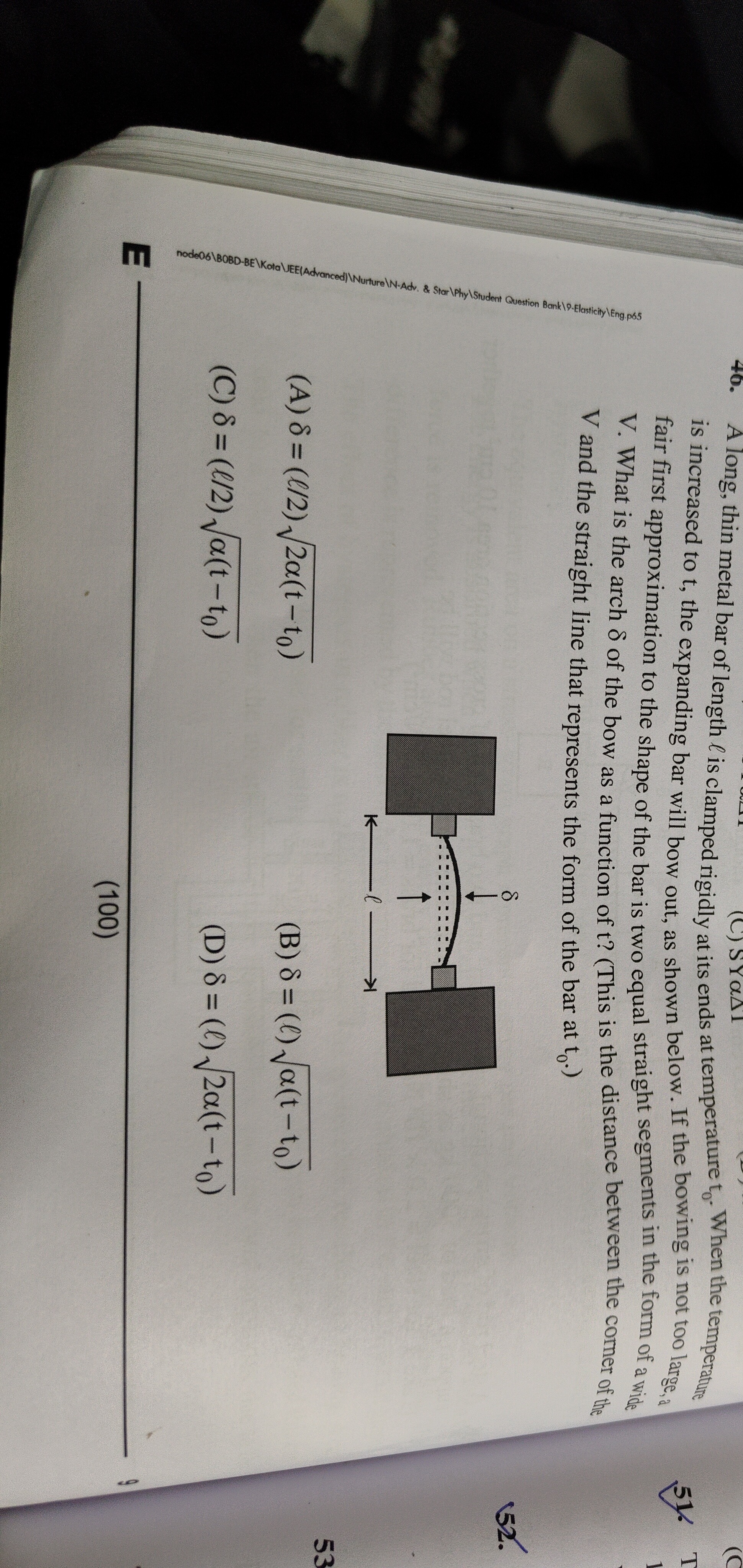Question
Question: A long, thin metal bar of length l is clamped rigidly at its ends at temperature to. When the temper...
A long, thin metal bar of length l is clamped rigidly at its ends at temperature to. When the temperature is increased to t, the expanding bar will bow out, as shown below. If the bowing is not too large, a fair first approximation to the shape of the bar is two equal straight segments in the form of a wide V. What is the arch δ of the bow as a function of t? (This is the distance between the corner of the V and the straight line that represents the form of the bar at to.)

δ=(l/2)2a(t−t0)
δ=(l/2)a(t−t0)
δ=(l)a(t−t0)
δ=(l)2a(t−t0)
δ=(l/2)2a(t−t0)
Solution
When the temperature of the metal bar increases by Δt=t−t0, it tends to expand. If free to expand, its length would increase by ΔL=αlΔt, where α is the coefficient of linear thermal expansion. The total expanded length would be lnew=l+αlΔt.
The problem approximates the bowed shape as two equal straight segments forming a V. Let the length of each segment be L′. The total length of the V-shape is 2L′.
The total length of the bowed shape (2L′) must be equal to the expanded length of the bar (lnew). Thus, 2L′=l+αlΔt, which gives L′=2l(1+αΔt).
The V-shape, with arch δ, forms two right-angled triangles. Each triangle has a base of l/2 (half the original length) and a height of δ (the arch). The hypotenuse of each triangle is L′. By the Pythagorean theorem, L′2=(l/2)2+δ2.
Substitute the expression for L′ into the Pythagorean equation: (2l(1+αΔt))2=(2l)2+δ2 4l2(1+αΔt)2=4l2+δ2 δ2=4l2((1+αΔt)2−1) δ2=4l2(1+2αΔt+(αΔt)2−1) δ2=4l2(2αΔt+(αΔt)2)
Since the bowing is not too large, δ is small, which implies αΔt is small. We can neglect the term (αΔt)2 compared to 2αΔt. δ2≈4l2(2αΔt)=2l2αΔt Taking the square root: δ≈2l2αΔt=2lαΔt=l2αΔt Replacing α with a and Δt with (t−t0): δ≈l2a(t−t0) This can be rewritten as: δ≈2l2a(t−t0)=2l2a(t−t0)
